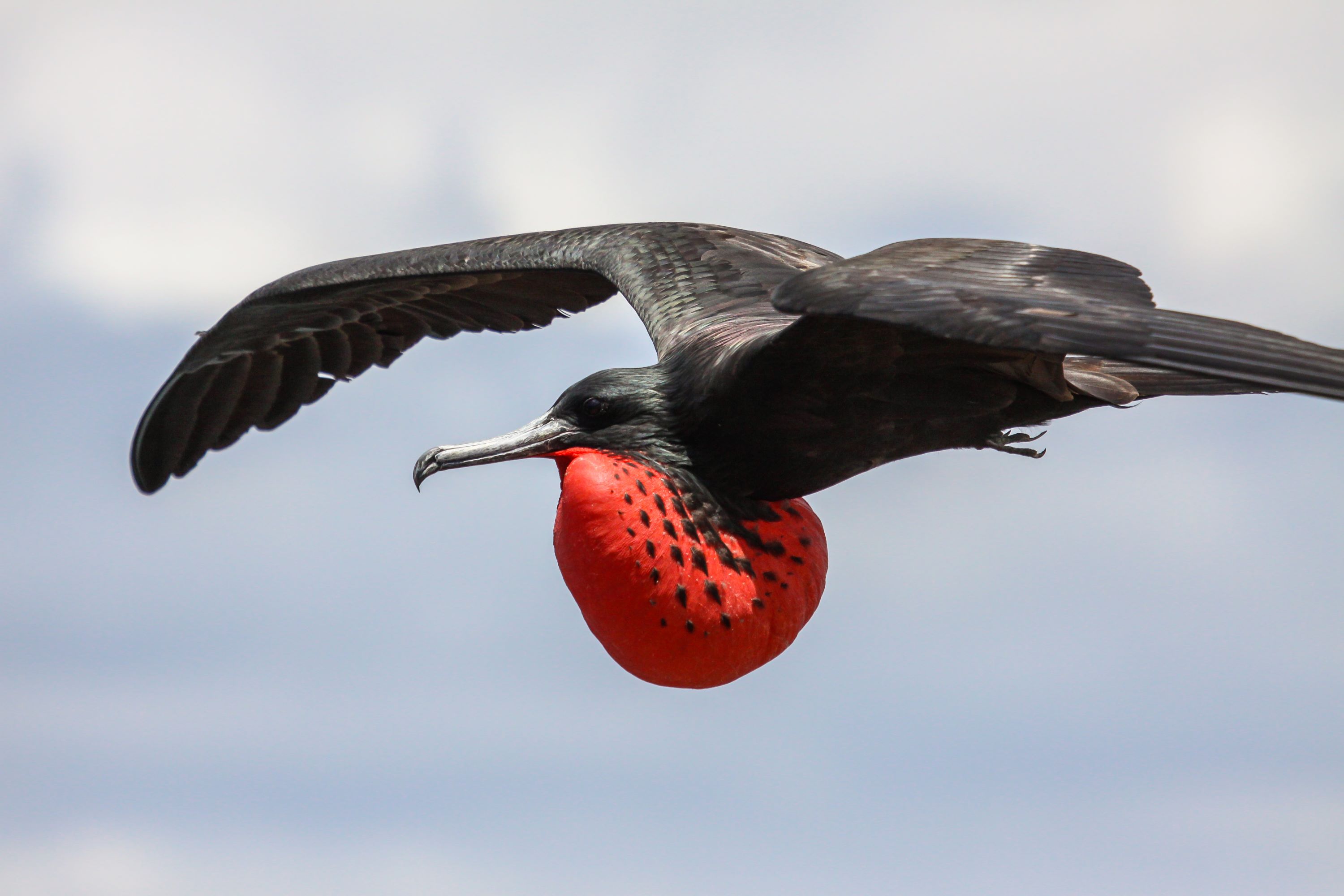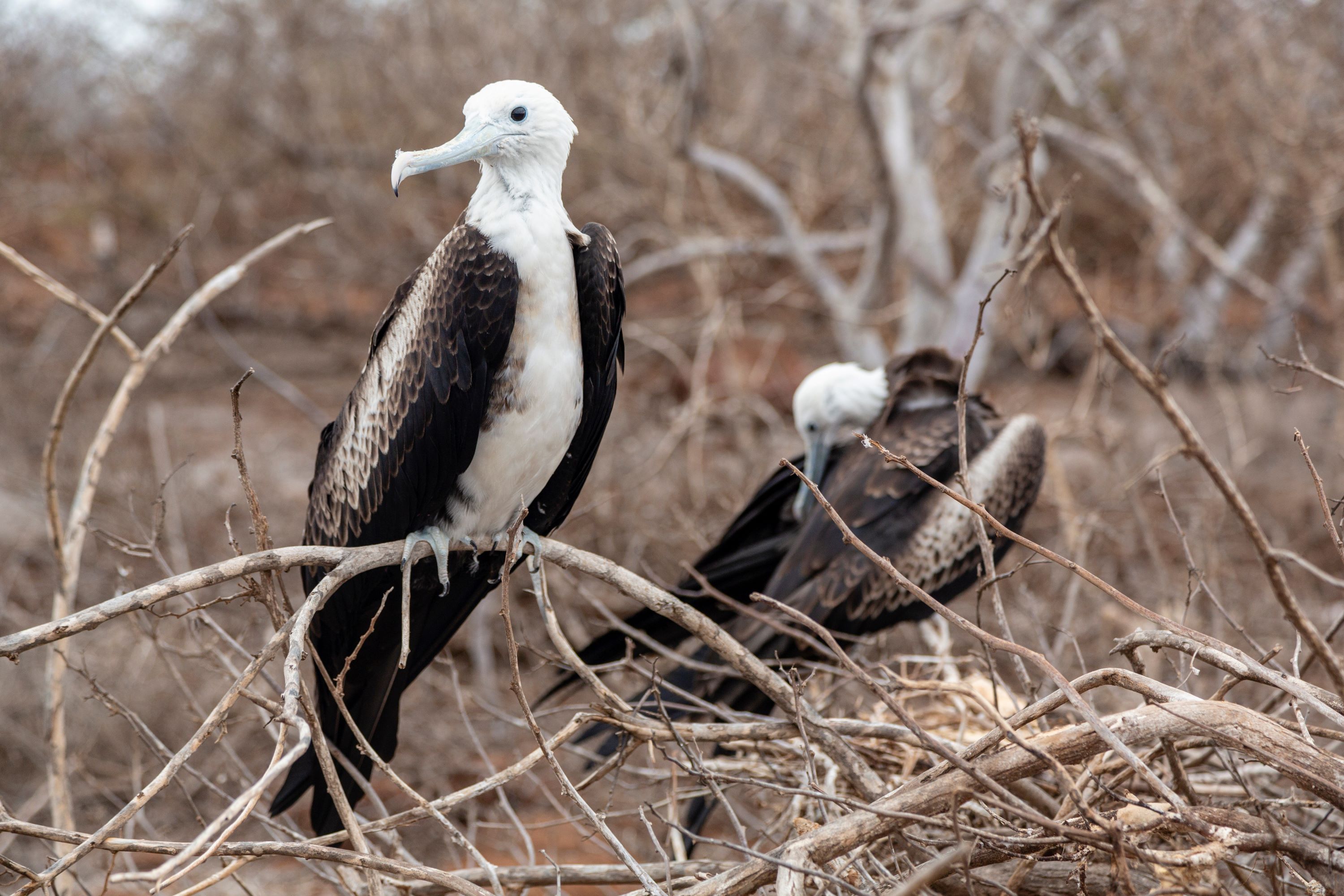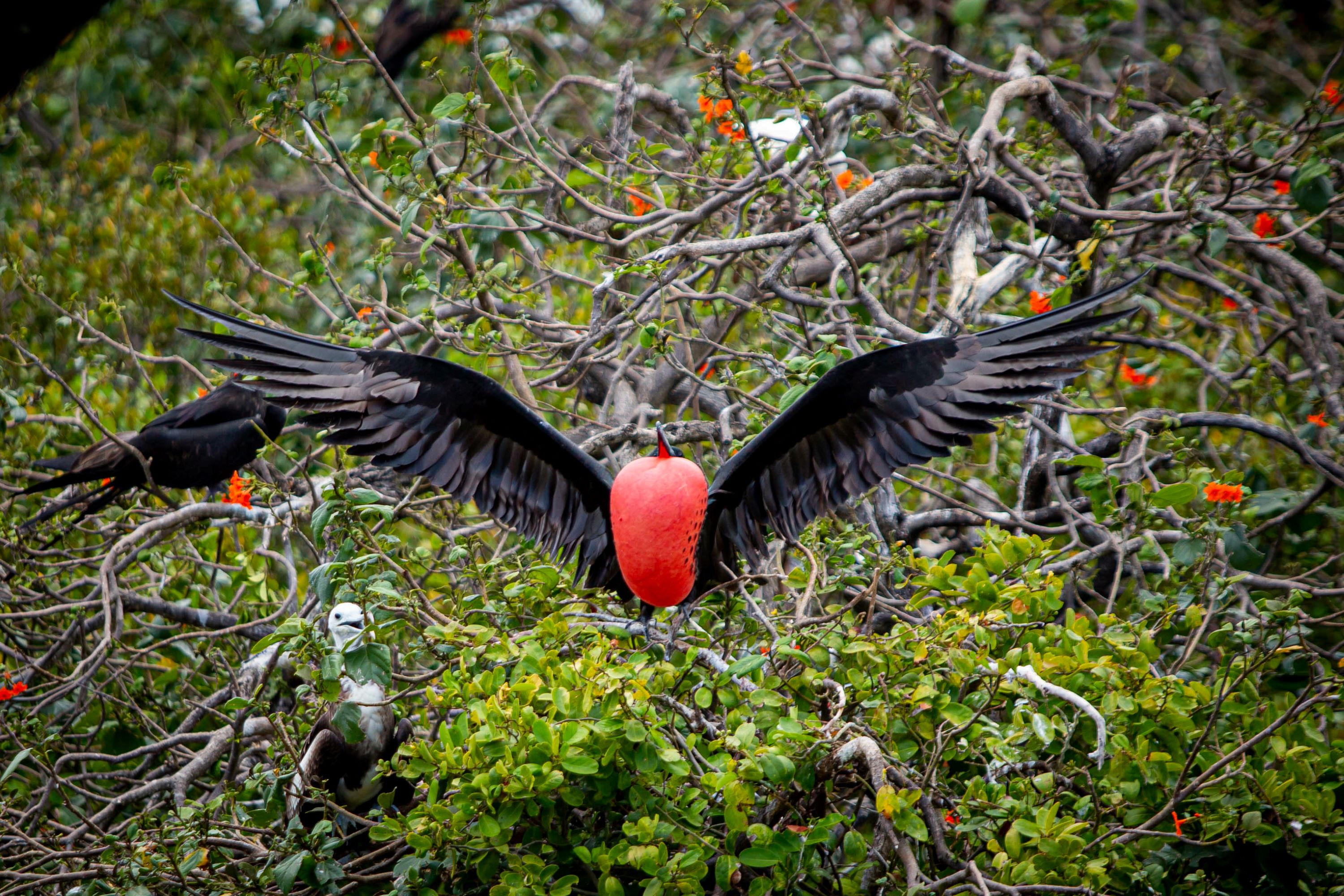
Magnificent Frigatebird: The Master of the Skies, Fregata magnificens
Introduction to the Magnificent Frigatebird
The Magnificent Frigatebird, Fregata magnificens, is a seabird of exceptional interest and beauty, known for its impressive wingspan, unique feeding habits, and spectacular courtship displays. Typically associated with tropical and subtropical oceans, this species has occasionally been sighted in Utah, making it a rare and exciting find for local birdwatchers.
Physical Characteristics
The Magnificent Frigatebird is one of the largest species within the frigatebird family. Males are recognizable by their striking black plumage and a distinctive red gular sac, which they inflate during the breeding season as part of their courtship display. Females, slightly larger than males, have white underbellies and are less colorful. Both sexes have long, forked tails and an impressive wingspan, reaching up to 2.3 meters, which allows them to glide effortlessly for long periods.
Habitat and Global Distribution
Fregata magnificens is predominantly a bird of tropical and subtropical regions, typically found over warm ocean waters. Their main breeding colonies are located in the Caribbean, along the coasts of the Americas, and on the Galápagos Islands. However, their ability to soar for weeks without landing makes them capable of reaching far-flung locations, such as Utah.

Diet and Unique Feeding Behavior
Magnificent Frigatebirds primarily feed on fish and squid, which they skillfully snatch from the ocean surface. They are known for their kleptoparasitic behavior, harassing other seabirds in the air until they drop or regurgitate their food, which the frigatebirds then catch mid-flight. This opportunistic feeding strategy is complemented by their agile flying skills.
Breeding and Reproductive Behavior
The breeding behavior of the Magnificent Frigatebird is characterized by the male's dramatic display of his red gular sac. Males gather in groups, vibrating their outstretched wings and clattering their bills while keeping their air sacs inflated, aiming to attract females flying overhead. The species is monogamous during the breeding season, with pairs forming strong bonds.
Chick Rearing and Parental Care
Frigatebirds have one of the longest parental care periods among birds. After hatching, the chick is fed by both parents for more than a year, during which it develops the necessary skills for survival. This extended care period is crucial for the chick’s development, given the complexities of their feeding and flying behaviors.

Conservation Status
While the Magnificent Frigatebird is not currently considered endangered, it faces threats from habitat destruction and climate change. The preservation of their breeding and feeding grounds is essential for the maintenance of healthy populations.
Magnificent Frigatebirds in Utah
The sightings of Magnificent Frigatebirds in Utah, such as those recorded in April 2016 and May 1999, are rare events. These occurrences are especially exciting for the local birdwatching community, offering a glimpse into the species' remarkable range and adaptability.
Conclusion: The Allure of the Magnificent Frigatebird
In conclusion, the Magnificent Frigatebird, Fregata magnificens, is a symbol of the open ocean's wonder, with its soaring flight, unique feeding habits, and elaborate breeding displays. While their presence in Utah is unusual, it highlights the extraordinary journeys and adaptability of migratory birds. These occasional visits offer a rare and thrilling experience for bird enthusiasts in the region and underscore the importance of conserving diverse habitats for migratory species.